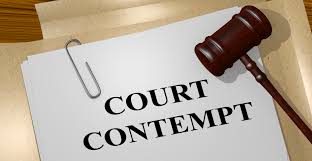Navigating the Maze of Striking Out Pleadings – A Hands-On Approach to Invoking the High Court’s Jurisdiction (2)
Must a Defendant Enter Appearance before Bringing an Application Under Order 11 Rule 18?
Once a writ of summons with its accompanying statement of claim is served on a Defendant, the next step is for the Defendant to enter an appearance to the suit either by himself or through an appointed lawyer. The Defendant, after reviewing the writ and statement of claim, may also elect to have the suit dismissed for any of the reasons provided under Order 11 Rule 18 of C.I. 47.
The issue that often arises has to do with the nature of the appearance that the Defendant must opt for. The Defendant’s dilemma is to decide whether to enter an unconditional or a conditional appearance; and whether the entry of a conditional appearance disentitles him from applying to have the pleadings struck out or the entire action dismissed.
Under the rules of court, a party may enter an unconditional appearance to a suit or a conditional appearance under Order 9 rule 7 of C.I 47. The entry of an unconditional appearance means that the Defendant wholly submits to the jurisdiction of the court and that there are no issues with the issuance or service of the writ or the jurisdiction of the court.
The Defendant may elect to enter a conditional appearance. The entry of a conditional appearance gives the Defendant the right to apply to either set aside the writ, set aside the service of the writ or declare that the writ or notice of it has not been served on the Defendant or to discharge any order that gives leave to serve the notice of the writ on the Defendant outside the country[1].
In the case of Amissah-Abadoo v Abadoo[2] the court quoting from the 1969 White Book Part 1 defined what a conditional appearance was as follows:
“The term `conditional appearance’ means an appearance in qualified terms, reserving to the appearing defendant the right to apply to the Court to set aside the writ, or service thereof, for an alleged informality or irregularity which renders either the writ or service invalid or for lack of jurisdiction…A conditional, appearance or appearance under protest is a complete appearance to the action for all purposes[3], subject only to the right reserved by the defendant to apply to set aside the writ or the service thereof, on any ground which he can sustain. A defendant has the right to appear conditionally where he has a bona fide intention to dispute the jurisdiction of the Court.”
In the practice, the common question that surfaces is, does the entry of a conditional appearance disable a defendant from applying to strike out a suit, or any other application for that matter? The basis for this question has been a reference to the oft-cited case of R v High Court, Accra ex parte Aryeetey[4]. In the said case it was held in holding 3 as follows
“A conditional appearance was to enable a defendant who intended to object to the issue or service of a writ or notice of a writ on him, or the jurisdiction of the court, to apply to the court to set aside the writ or notice of the writ or the service thereof on him. Such an application might encompass any irregularity or defect in the issue or service of the writ or notice of the writ. Thus, it was not permissible for a defendant who had entered a conditional appearance to move the court to have the writ set aside because he had a legal defence, even if unimpeachable, to the action. Accordingly, such an application was not available to the respondent who after entering a conditional appearance to the applicant’s writ at the High Court sought to rely on a plea of res judicata since that plea, to be successful, had to satisfy certain requirements which could only be revealed through evidence. Moreover, the respondent had no right to apply to set the applicant’s writ aside because he had a good defence to the action.”
Armed with this holding many a judge and practitioner have refused to accept that a party who has entered a conditional appearance may apply to have pleadings struck out and have the action dismissed.
For the purpose of this article, we shall take a look at all the provisions of the rules and the case law to see the practicality of this position. Could it be the lawmaker’s intention to bar a Defendant, from making any applications after the entry of a conditional appearance, I would think not.
It is trite learning that in interpreting statutes the relevant section must be read as a whole and not in isolation to garner the intent of the lawmaker. Order 9 rule 7 of C.I 47 titled ‘conditional appearance’ provides that:
A Defendant may file a conditional appearance
A conditional appearance, except by a person sued as a partner of a firm in the name of that firm and served as a partner, is to be treated for all purposes as unconditional appearance unless the Defendant applies to the court within the time limited for the purpose, for an order under rule 8 and the court makes an order under that rule.
Order 9 rule 8 provides that:
“A Defendant may at any time before filing appearance or if the Defendant has filed a conditional appearance, within fourteen days after filing appearance apply to the Court for an order to set aside the writ, set aside the service of the writ or declare that the writ or notice of it has not been served on the Defendant or to discharge any order that gives leave to serve the notice of the writ on the Defendant outside the country.”
It is also provided by section 42 of the Interpretation Act, 2009 that the word “may” when used in a statute is always permissive and not mandatory.
Reading of Order 9 rules 7 and 8 together, the inference that can be drawn is that unless a Defendant intends to apply for any of the remedies provided under Order 9 Rule 8, a conditional appearance is treated as an unconditional appearance for all intents and purposes, further a Defendant after the entry of a conditional appearance is not mandated to apply to have the writ set aside.
In the case of Amissah-Abadoo v Abadoo (Supra) the court stated that where a conditional appearance is filed and the party does not apply to set aside the writ or service of the writ the appearance will be treated as unconditional for the purpose of any application. The Court stated as follows “Her grievance is not among those which justify her entering a conditional appearance, the conditional appearance, therefore, is out of place and will be treated as unconditional appearance which would entitle her to present her application under Order 25, r. 4”[5].
Order 11 rule 18 of C.I. 47 provides that “The Court may at any stage of the proceedings order any pleadings or anything in any pleading to be struck out on the grounds that; (a) it discloses no reasonable cause of action or defence; (b) it is scandalous, frivolous or vexatious; (c) it may prejudice, embarrass or delay the fair trial of the action; or it is otherwise an abuse of the process of the Court and may order the action to be stayed or dismissed or judgment to be entered accordingly. “
The plain ordinary meaning of the words “at any stage of the proceedings” is to be construed to mean at any time after the issuance of the writ and statement of claim, and in the case of a Defendant seeking to have an action stayed or dismissed right after the filing of an appearance such an application may be brought. The provisions of the said order do not limit the application to one which can be brought by only a Defendant who has entered an unconditional appearance to a suit.
The High Court has power under its inherent jurisdiction to summarily terminate proceedings for being vexatious, frivolous or an abuse of the court process. In this same vein where applications to dismiss a suit, are brought under the inherent jurisdiction of the court the rules of court do not apply and issues of the form of appearance do not matter. In the case of R v High Court, Accra ex parte Aryeetey[6] the court admitted this fact in holding 4 where it stated
“…….However, unlike its power under Order 25, r 4 of LN 140A the court in the exercise of the power under its inherent jurisdiction could consider all the facts, including affidavit evidence. Accordingly, although in the instant case the respondent might not be entitled after entry of his conditional appearance to ask the court to strike the applicant’s writ and statement of claim on the ground that his action was vexatious, scandalous and an abuse of the process of the court, since the trial High Court justice found the applicant’s application “a serious abuse of the court”, she was justified in exercising the court’s inherent jurisdiction in summarily terminating the proceedings”.
Tying this in with the fact that an application to strike out pleadings/dismiss a suit may be brought under the inherent jurisdiction of the court and under the rules, it can be inferred that the entry of a conditional appearance does not prevent a Defendant from applying to dismiss the suit under Order 11 rule 18 of CI 47
CONCLUSION.
In conclusion it is the writers hope that the state of the law with respect to the admissibility of affidavits in Applications brought under Order 11 Rule 18(1)(a) must be reviewed to provide clarity to all practitioners. The writer is of the opinion that in using the word “evidence” in Order 11 rule 18(2) the lawmaker did not intend to exclude the use of affidavits.
The writer will conclude with short checklist for use by all practitioners seeking to invoke the court’s jurisdiction under Order 11 rule 18(1)(a).
- The form of the appearance entered has no bearing on the success or otherwise of the application
- Though the application may be brought at any time, it must be brought timeously[7].
- The motion paper should state the rule/jurisdiction which the Defendant is invoking or where it is both the inherent jurisdiction and the rules of court motion paper should clearly state that.
- The application must state the specific pleadings which are being sought to be struck out.
[1] Order 9 rule 8 of C.I 47
[2] 1973 GLR 490 -500
[3] Emphasis mine
[4][ 2003-04] SCGLR 398
[5] Order 25 rule 4 of LN 140A is the same as Order 11 rule 18 of C.I. 47
[6] [2003-04] SCGLR 398
[7] Gbenartey & Glie V Netas Properties And Investments & Other [2015-2016] SCGLR 605 at 617



Very helpful. Thanks Kwabena!